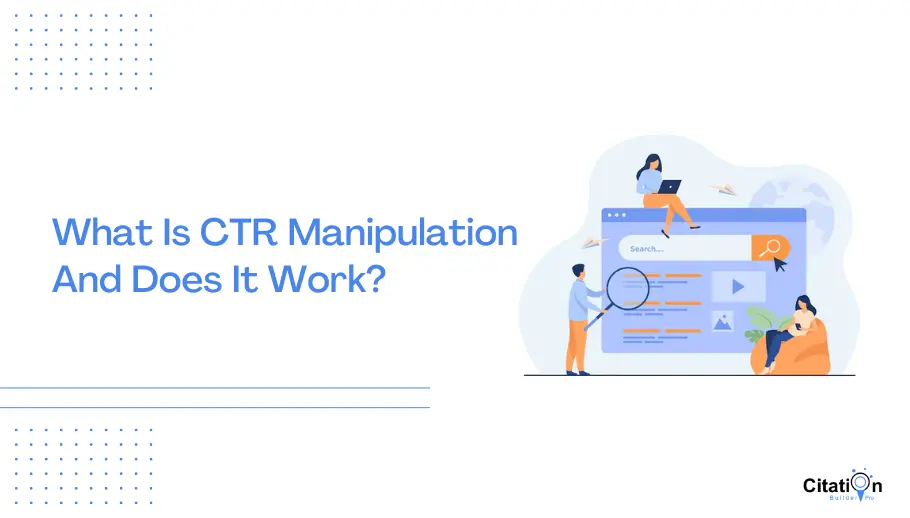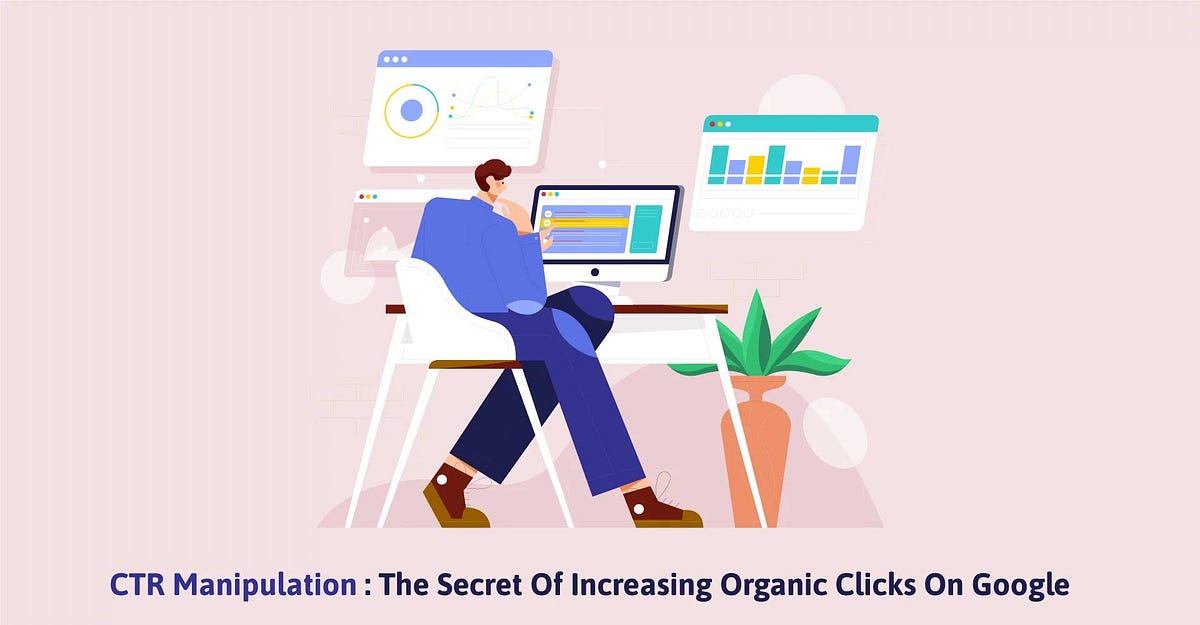Crafting an Efficient CTR Manipulation Press Release for Exposure
Crafting an Efficient CTR Manipulation Press Release for Exposure
Blog Article
Attaining Online Success Through Strategic CTR Manipulation
In the digital landscape, attaining online success progressively pivots on the nuanced art of tactical click-through rate (CTR) adjustment. Exploring the fragile interplay of psychology, analytics, and imaginative implementation reveals a pathway to not only boost CTR however additionally grow enduring partnerships with audiences.

Recognizing Click-Through Rates
Understanding the complexities of click-through rates (CTR) is vital for marketing experts intending to maximize their electronic campaigns. CTR, defined as the ratio of customers that click on a details web link to the number of overall individuals that check out a page, ad, or e-mail, acts as a critical statistics in assessing the performance of internet marketing methods. A higher CTR indicates that the content resonates well with the target market, motivating involvement and communication.
To compute CTR, the formula is uncomplicated: split the number of clicks by the number of impacts and increase by 100 to share it as a percent. This dimension not only supplies insight right into the performance of ads but likewise reveals opportunities for improvement. By evaluating CTR, marketing experts can determine which components of their projects-- such as headlines, pictures, or call-to-action switches-- are most reliable in driving clicks.
Additionally, recognizing industry criteria for CTR is essential, as they can differ substantially across different fields. By continuously keeping an eye on and adjusting methods based on CTR information, online marketers can refine their projects, improve individual involvement, and ultimately drive conversions, therefore adding to the total success of their digital marketing efforts.
The Psychology of Online Behavior
The efficiency of electronic marketing techniques mainly pivots on the psychological triggers that influence on the internet actions. Comprehending these triggers is crucial for crafting compelling web content that resonates with users and drives engagement. Key psychological principles, such as social evidence, scarcity, and urgency, play a considerable role in forming customers' choices.
Social evidence, for instance, leverages the tendency of people to look to others for support, making reviews and user testimonials powerful devices in encouraging potential clients. Scarcity methods, which create an assumption of minimal accessibility, can compel individuals to act swiftly, fearing they may lose out on an opportunity. Urgency infuses a sense of immediacy, motivating individuals to make quicker decisions and lowering the probability of procrastination.
Additionally, the cognitive predispositions that influence on the internet habits, such as anchoring and loss hostility, can be taken advantage of to improve advertising and marketing initiatives. By tactically placing details and emphasizing potential losses over gains, marketing experts can significantly influence customer choices. In a significantly competitive electronic landscape, understanding the complexities of on-line actions psychology is necessary for achieving sustained success and optimizing click-through rates.
Methods for Improving CTR
Improving click-through prices (CTR) is crucial for making best use of the performance of electronic advertising projects. Incorporating numbers, concerns, or psychological triggers can dramatically boost interaction.
Another effective approach is leveraging high-quality visuals. Engaging images or videos can attract users in, making them more probable to click on the link. Additionally, using A/B screening allows marketing experts to try out various content styles, figuring out which variations yield the highest CTR.
Strategically putting calls-to-action (CTAs) within your content is likewise vital. CTAs need to be clear, persuasive, and located plainly to lead customers towards the wanted activity. Additionally, customizing content based upon customer actions and choices can produce a more appropriate experience, increasing the chance of clicks.
Finally, guaranteeing that landing web pages are optimized for mobile tools is essential, as a significant portion of website traffic currently comes from smartphones. A smooth user experience across all tools can substantially enhance CTR and drive much better outcomes for electronic advertising and marketing initiatives. By carrying out these techniques, marketers can successfully boost their click-through prices.
Measuring and Examining Your CTR
Determining and examining click-through prices (CTR) is a crucial component of examining the success of digital advertising and marketing projects. CTR, defined as the proportion of users that click on a particular link to the total number of customers that watch the page, acts as a crucial efficiency indication. A complete evaluation starts with the gathering of CTR information throughout numerous over here networks, consisting of e-mail, social media sites, and paid advertisements.

In addition, tracking trends with time is vital. A constant rise in CTR may indicate effective strategies, while a decline can signal the need for prompt changes. Relative analysis with industry standards better contextualizes efficiency, offering insights right into necessary improvements.
Eventually, gauging and examining CTR not just educates tactical decision-making but also promotes a culture of continual renovation in advertising and marketing efforts, ensuring that projects successfully reach and reverberate with target audiences. CTR Manipulation.
Ethical Factors To Consider in CTR Adjustment
As electronic advertising and marketing increasingly relies on click-through prices (CTR) to assess efficiency, moral factors to consider surrounding CTR manipulation have actually involved the leading edge. While maximizing CTR via calculated techniques can enhance presence and involvement, it is crucial to assess the implications of such practices.
Controling CTR through deceptive techniques, such as clickbait headings or deceitful advertisements, can erode consumer trust fund and damage brand name track record. These techniques might yield short-term gains yet frequently lead to lasting consequences, including client reaction and governing scrutiny (CTR Manipulation). Honest marketing highlights openness, motivating companies to existing exact information that straightens with individual assumptions
Furthermore, the increase of expert system and automated click generation presents added moral obstacles. Using robots or other automated systems to pump up CTR undermines the stability of efficiency metrics and alters advertising and marketing data, making complex decision-making procedures.
Eventually, online marketers should balance the search of higher CTR with ethical standards that prioritize sincerity and consumer well-being. By promoting authentic interaction and giving straight from the source worth to users, brands can attain lasting success while promoting ethical advertising and marketing concepts. In browsing these factors to consider, businesses will certainly not just secure their credibility but also cultivate a loyal consumer base.
Verdict
In summary, attaining on the internet success via calculated CTR adjustment needs a complex method that stabilizes optimization methods with moral considerations. Inevitably, a commitment to moral requirements in CTR approaches not only improves performance however also try this out grows long lasting partnerships with audiences.
Report this page